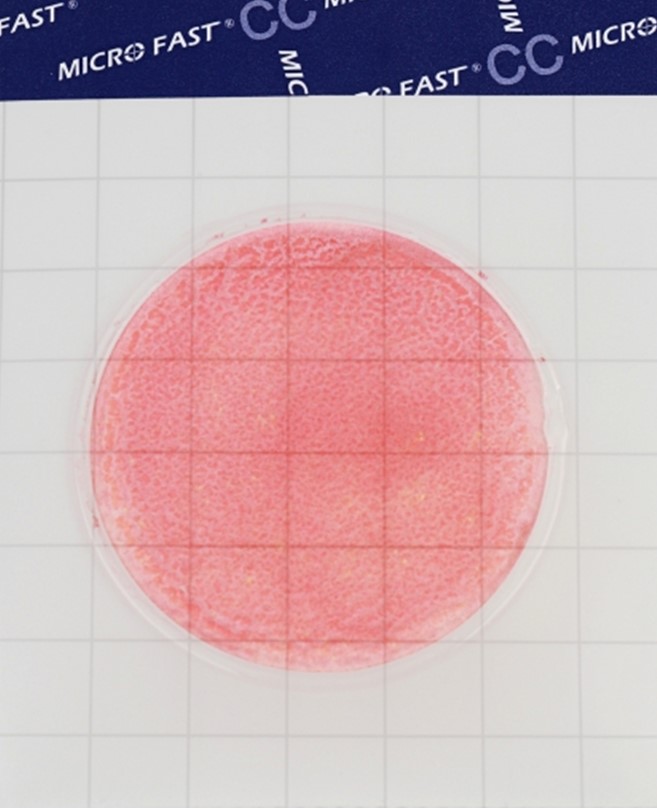China should pay more attention to the sustainability of imported products, experts say

Increasing attention to sustainability needs to be placed in CHINA 's food imports, the researchers said, as rising living standards in the country will increase demand for animal products.
A study published in the journal Nature Sustainability says the country's demand for livestock products will increase significantly, which in turn will lead to increased pasture use, which could lead to more carbon emissions.
Given the projected rise in China's food imports, much of this increase in demand for pastures will occur outside the country, the researchers said, so sustainability should be a focus of Beijing's food import policy.
The food import scenario is outlined in a paper titled "Future Food Demand in China and Its Implications for Global Trade and the Environment" co-authored by Hao Zhao, a researcher at the University of the Chinese Academy of Sciences.
"The distribution of environmental impacts between China and the rest of the world will largely depend on the development of trade openness," the researchers write in relation to the country's food imports. “Thus, in order to limit the negative environmental impact of growing food consumption, in addition to domestic policy, China must also take responsibility for the development of sustainable international trade.”
Like many countries experiencing rapid economic growth, demand for animal products, mainly MEAT and dairy products, is projected to increase in China, and part of this demand is likely to be met by food imports.
By 2050, demand is expected to increase by 16-30%, which will increase the need for pastures by 3-12 million hectares. As a result, China 's agricultural greenhouse gas emissions are likely to increase, with researchers predicting the percentage change is likely to be between minus two percent and plus 16 percent.
But the growing demand for animal products in China will be felt mainly in terms of additional pasture needed outside the country due to rising food imports. The researchers estimate that an additional 90 million to 175 million hectares of grassland outside of China will be needed by mid-century to meet this demand for food imports.
The consumption of meat and dairy products and their relationship to the production of greenhouse gases is increasingly coming to the fore, especially in European countries, amid efforts to achieve carbon neutrality to limit global temperature rise.
According to a study by the Boston Consulting Group, consumption of livestock products in Europe and North America will peak in 2035. The report indicated that in 2020, the total sales of proteins based on animal, plant or microorganism cells, known as alternative proteins, amounted to about 13 million tons. it is called more environmentally friendly than meat grown in the traditional way.
While last year the total volume of meat sold was only about one fiftieth, by 2035 sales are projected to increase sevenfold to 97 million tons. However, growth rates will be strongly influenced by the way technology develops. At a recent forum in Dubai, Tommy Stadlen, co-founder of Giant Ventures, a company that supports tech start-ups, said that non-animal meat alternatives are “increasingly difficult to distinguish from real meat.” A few years ago, it was described that the production of one lab-grown burger cost 325 $000 (€278,980), but Stadlen said the cost was now closer to $11 (€9.44).
“Very soon, such meat will become cost-competitive with farm-raised meat,” Stadlen said, adding that this could eventually lead to traditional meat becoming a “rare treat” for consumers.
Read together with it:
- Китайский рынок мяса: консолидация, меры безопасности и проблема субпродуктов«Мы завершаем выставку CIIE в Шанхае, в целом хорошую выставку, где мы видим консолидированные цены, как это было с начала года, но в то же время рынок ожидает решения по защитной мере, определения которой должны быть даны в конце ноября», — сказал он Valor Agregado Agro. Лидер пояснил, что глобальная ситуация характеризуется «колебаниями на международном рынке, вызванными интенсивной геополитичес...
- Rosselkhoznadzor has banned meat imports from two Belarusian enterprises due to violations.In addition, three other Belarusian producers are now subject to strict laboratory monitoring due to initial deviations: azithromycin was found in poultry MEAT from Druzhba Poultry Farm, and the pesticide imidacloprid was found in honey from Pchalyar Polachchyny Farm. Powdered MILK from Luninetsky Dairy Plant was also found to containcoli bacteria . These measures were taken at the request of the ...
- В Амурскую область поступило свыше 6 тысяч тонн мяса птицы из КитаяС 3 июня по 6 ноября инспекторы проверили 290 партий мяса, все из которых были сопровождены ветеринарными сертификатами, подтверждающими их качество и безопасность. Лабораторные исследования, проведенные под контролем Россельхознадзора, не выявили нарушений, и груз был допущен на территорию России.
- Британия запретит морские перевозки российского СПГЗапрет на предоставление услуг по перевозке и страхованию российского СПГ будет вводиться поэтапно и по согласованию с ЕС, который ранее ввел санкции против российского газа. Москва называет ограничительные меры Запада незаконными Великобритания планирует запретит компаниям предоставлять услуги по перевозке и страхованию российского сжиженного природного газа (СПГ), передает REUTERS со ссылкой на ...
- Трамп обвиняет мясную промышленность США в повышении цен на мясоЭта просьба поступила после нескольких дней критики со стороны различных скотоводов и штатов в отношении его плана по увеличению импорта говядины из Аргентины. Трамп заявил, что основные мясоперерабатывающие предприятия страны, «в основном принадлежащие иностранцам, искусственно завышают цены и ставят под угрозу продовольственное снабжение страны». Поэтому, продолжил Трамп, «необходимо немедленно ...
- Аргентина добивается прогресса в вопросе возможности продажи живого скота в ТурциюОднако этот первоначальный оптимизм сопровождался призывом к действию. Чтобы превратить эту возможность в устойчивый торговый поток, необходимо было преодолеть два ключевых препятствия: санитарную обстановку в отношении ящура и отсутствие индивидуальной прослеживаемости. С публикацией резолюции 841/2......
- Китай рассматривает возможность введения пошлин на аргентинскую говядинуВ преддверии открытия новой Китайской международной импортной выставки (CIIE), одного из важнейших торговых мероприятий в мире, возникла проблема, затрагивающая всю цепочку поставок скота и мяса из Аргентины: китайское правительство ввело «защитную» процедуру в отношении импорта говядины. Эта мера, вступившая в силу в декабре 2......




























































